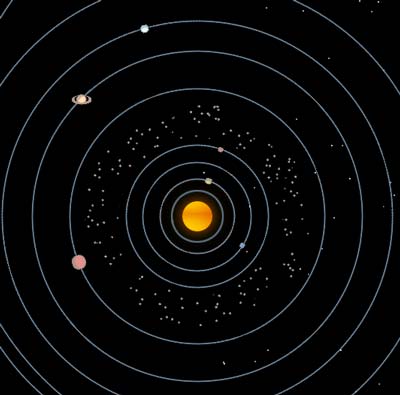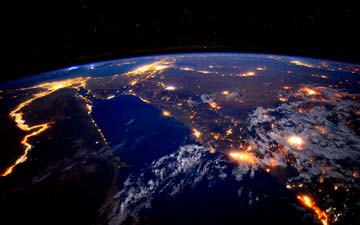Ask the Astronomer
Reginald asked:
What do worm holes and curved space have in common and how are they different?
Astronomer William Georgevich replies:
Thanks for your excellent question. Let's start with curved space.Current theories consistently agree that the Big Bang created Time and Space. One of Stephen Hawking's simplest and greatest contributions to cosmological thought is that you cannot ask the question what happened before the Big Bang because there was no before.
Because everything in the universe is expanding away from everything else in the Universe, every place in the Universe is the Center of the Universe. When Edwin Hubble first discovered this in 1930, another physicist took a balloon and painted dots on it. Blowing up the balloon demonstrates that every dot expands from every other dot. What's pushing every dot from every other dot. SPACE! Its space that expands pulling all the galaxies that are a part of it away from each other.
If space is a big expanding balloon, then space is curved.
Worm holes are a cosmologists conjecture that connects a Black Hole to a White Hole. If matter and energy are falling into the gravity well of a Black Hole, perhaps a White Hole is a place where all this energy comes out. Early theories proposed that perhaps Quasars whose energy output exceeds any other known phenomenon might be White Holes. Because gravity bends space and time, Reginald, you probably have associated worm holes with curved space. And in this way they are alike. Worm holes, if they exist, would be extreme examples of the space-time continuum being curved or distorted.
The way worm holes are different from curved space is that they could not be experienced directly. Contrary to science-fiction nothing in any state of existence on the physical plane as defined by matter and energy could survive travel through a worm hole in any recognizable fashion. No living thing could survive, much less the atomic particles an organism is made up of. Whereas slight curvatures of time and space occur all the time in the universe and are quite well tolerated by matter and energy.
This is why supernovae are of such interest to astronomers. These short-term events mimic small versions of the BIG BANG giving physicists a unique opportunity to get scientific gleanings of inconceivable distortions in the time-space continuum.
 See an animation of the movement of planets in our solar system.
See an animation of the movement of planets in our solar system. See amazing views from space
See amazing views from space